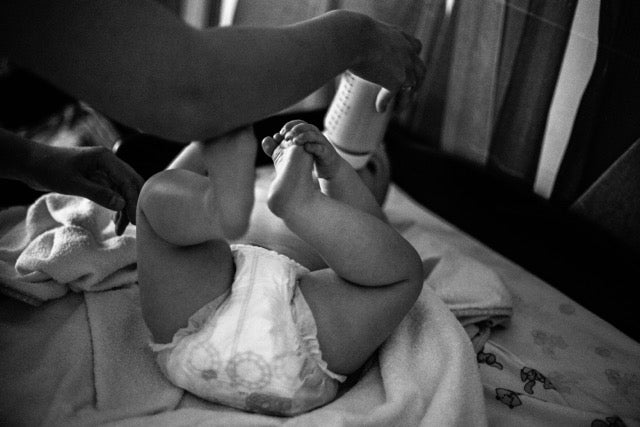
Holding babies correctly – safety, closeness and healthy development
Why holding correctly is so important
For new parents, holding their baby in their arms for the first time is one of the most exciting moments. This raises many questions – and not just with the first child. How do I hold my baby safely? What do I need to consider when picking up, carrying, or putting them down? Correct posture is crucial, as it not only influences your child's sense of security but also their physical development.
Basic principles: security and stability
A newborn cannot hold its head up on its own in the first few weeks of life. The neck and back muscles are barely developed at first, which means you must always support the head—whether you're picking up your baby, breastfeeding them, or carrying them around the house. It's especially important that you never lift your baby by the head or arms. You should also avoid sudden movements.
Babies love close physical contact. A well-supported position, close to your body, gives them a sense of comfort and security. At the same time, this closeness helps you pay attention to your baby's body signals—you'll notice more quickly if they're uncomfortable, tired, or hungry.
How to lift your baby correctly
When picking your baby up from the crib or changing table, you should speak slowly and deliberately – this builds trust and prepares them for movement. Then, with one hand, grasp under their bottom and the other, supporting them under their neck and back. Lift your baby evenly and close to your body, without letting their head tip backward. Important: Avoid sudden movements; glide gently into the upright position.
Many midwives recommend turning the baby slightly towards you – this helps it stabilize better and feel more secure.
Popular holding positions – and what you should pay attention to
1. Cradle position
This classic position is especially suitable for newborns. Your baby lies in your arms, their head resting in the crook of your arm. Make sure their back is slightly rounded and their head is higher than their torso – this allows them to breathe more easily and feels protected.
2. Belly-to-belly position
Very popular with older babies and ideal for bonding: You carry your baby upright against your chest, with their head tucked under your chin. Keep one hand under their bottom, and the other supporting their back. This position supports the spine while promoting head control.
3. Aviator grip
Here, the baby lies on its stomach on your forearm, facing to the side, and its legs hanging loosely. This position can help with gas – gentle pressure on the stomach releases air. Make sure the head is well supported and doesn't tilt to the side.
Typical mistakes when holding – and how to avoid them
Some positions may seem harmless, but in the long run, they can be unhealthy for your baby's development. For example, you should avoid carrying your baby upright with their back against your shoulder for too long when they're very young. In this position, their head often hangs backward or to the side, which puts strain on their neck muscles.
You should also avoid letting your baby sit on your lap before they can sit up on their own. Their spine isn't ready for this at this stage.
It is also important: never support just the bottom – the back and especially the head always need stabilization in the first few months.
Holding strengthens bonding – and your baby
In addition to the physical component, holding also provides an emotional anchor. Through touch and closeness, your baby learns that they are safe and loved. Studies show that children who are frequently held, carried, and lovingly touched develop a better body awareness and a more stable, basic trust.
Conclusion
Holding babies correctly means more than just "not dropping them." It's about safety, healthy development, and loving closeness. When you carry your baby with calm, awareness, and heart, you give them exactly what they need—security, stability, and a good start in life.


